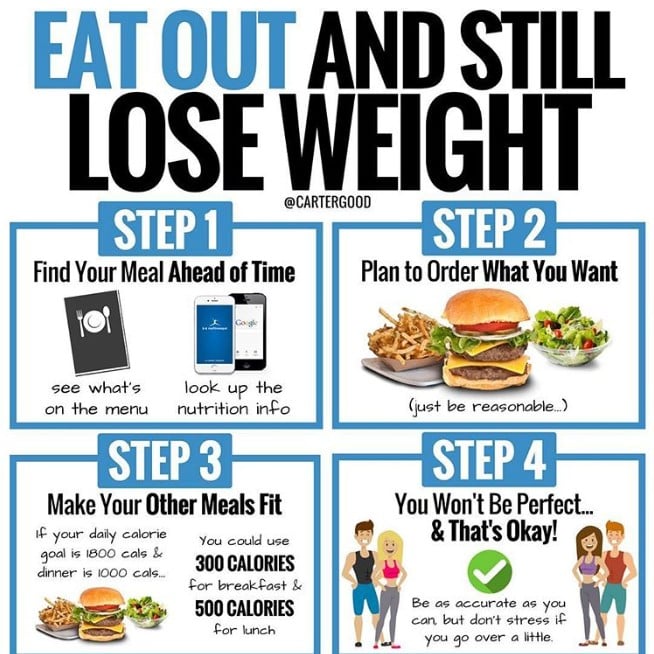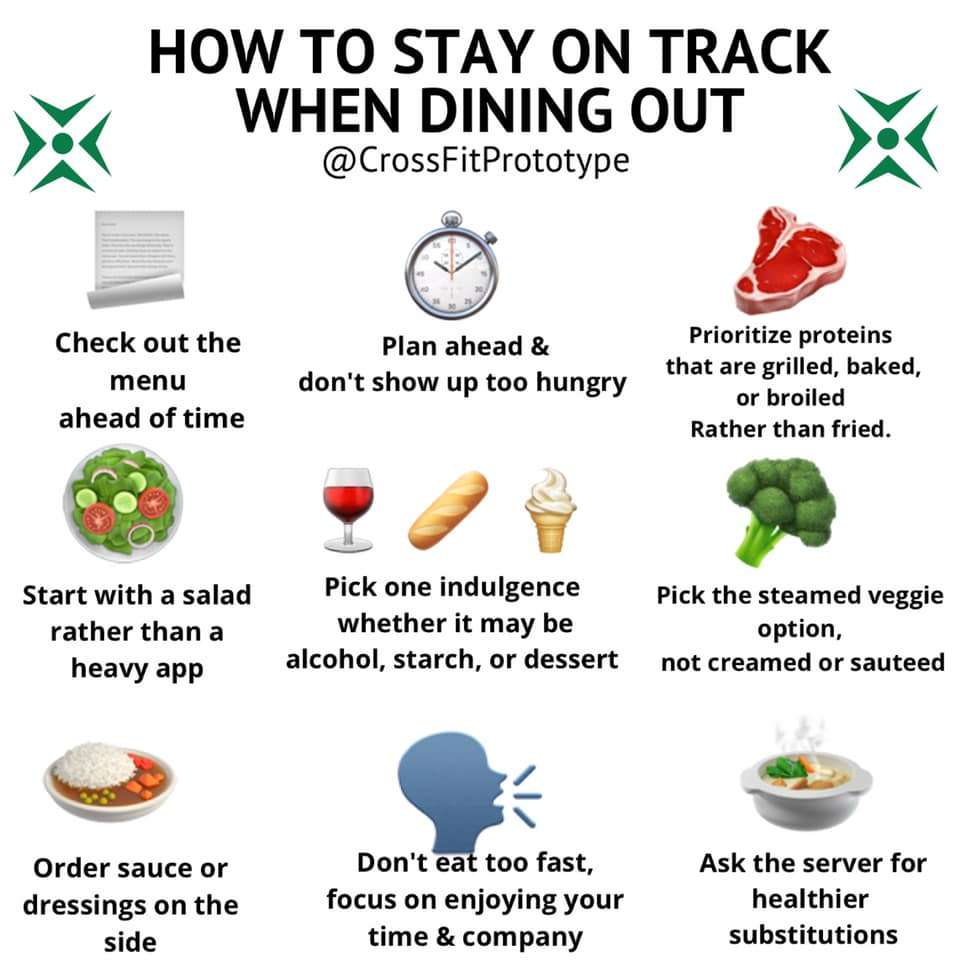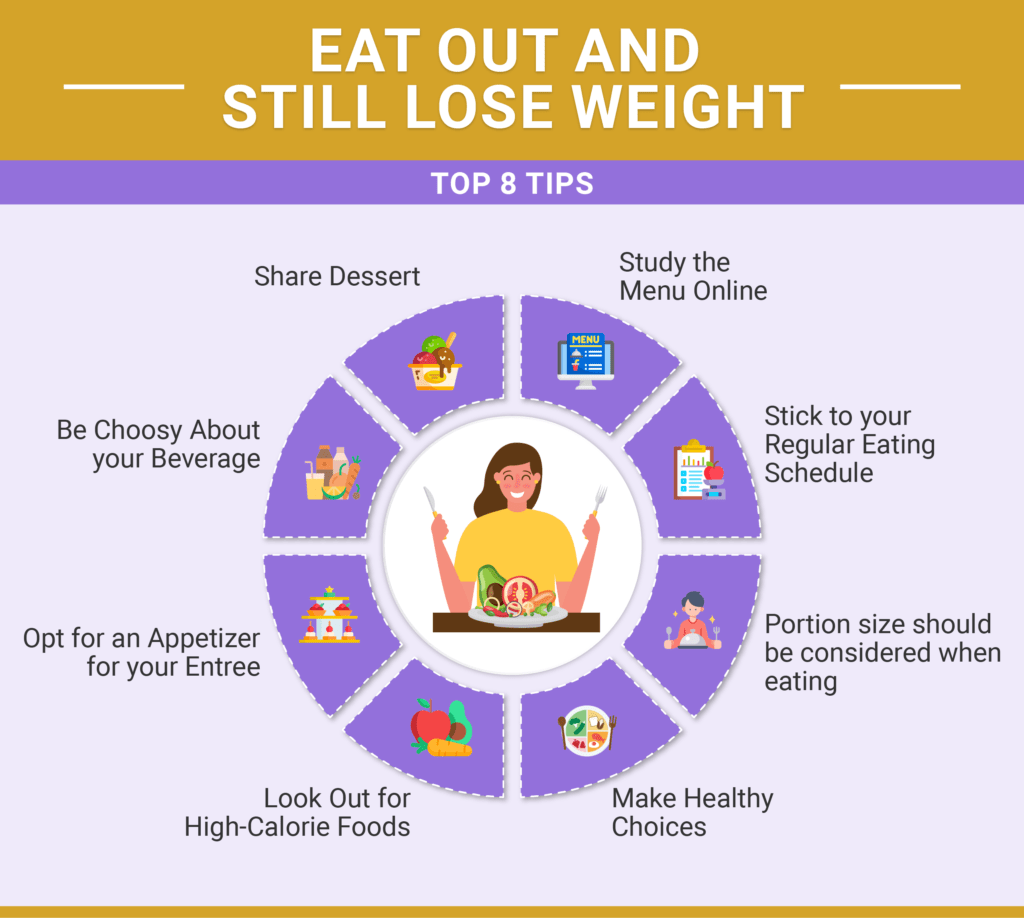Eating out at restaurants can be a challenge when you’re trying to lose weight, but it doesn’t mean you have to give up on dining out entirely. With some mindful choices and a little planning, you can still enjoy eating out while staying on track with your weight loss goals. By making smart menu selections, watching portion sizes, and being mindful of hidden calories, you can indulge in the occasional restaurant meal without feeling like you’re derailing your progress. So, don’t worry, you can still savor the flavors of your favorite restaurants while working towards a healthier you.

Choosing the Right Restaurant
When you’re trying to lose weight, it can feel daunting to eat out at restaurants. However, with the right approach, you can still enjoy dining out without sabotaging your weight loss goals. One of the first steps in making smart choices is researching healthy options. By doing a little bit of research beforehand, you can find restaurants that offer a variety of nutritious menu items.
Checking menus in advance is another useful strategy. Many restaurants now have their menus available online, allowing you to review their offerings before you even step foot inside. This gives you the opportunity to identify healthier options and plan your meal accordingly. By knowing what’s on the menu in advance, you can make a more informed decision about what to order.
Considering portion sizes is crucial when trying to lose weight. Many restaurants serve large portions that can contribute to overeating. Opting for restaurants that offer smaller portion sizes or even sharing a dish with a friend can help you stay on track with your calorie goals. It’s important to listen to your body and recognize when you’re satisfied, rather than feeling the need to finish everything on your plate.
Choosing restaurants that provide nutrition information can be extremely helpful when it comes to making informed choices. Some chains and independent restaurants now offer detailed nutrition information, including calorie counts and macronutrient breakdowns, on their websites or in-store. This information allows you to select meals that align with your dietary needs and goals.
Avoiding all-you-can-eat buffets can be a wise decision when trying to lose weight. While buffets can be tempting due to the wide variety of options available, they often encourage overeating. The all-you-can-eat format can make it difficult to control portion sizes and make healthy choices. It’s generally better to opt for restaurants that offer à la carte menu options instead.
Making Smart Menu Choices
Once you’ve chosen the right restaurant, it’s essential to make smart menu choices that support your weight loss journey. Selecting lean protein options is a great way to ensure that you’re getting the nutrients you need while keeping calories in check. Look for dishes that feature grilled or baked chicken, fish, or lean cuts of meat. These options tend to be lower in fat and calories compared to fried or breaded alternatives.
Choosing whole grain foods is another smart choice when eating out. Opt for whole grain versions of bread, pasta, and rice whenever possible. Whole grains are higher in fiber and other important nutrients compared to refined grains. They can help keep you feeling full for longer and provide sustained energy throughout the day.
When it comes to sides and salads, opting for fresh vegetables is a wise decision. Salads filled with leafy greens, colorful vegetables, and a variety of toppings can be a delicious and nutritious choice. Steamed or roasted vegetables are also great options, as they are typically lower in calories than fried options.
Avoiding fried or breaded foods is an important strategy for successful weight loss. These types of preparations often add unnecessary calories and fat to your meal. Instead, look for menu items that are grilled, baked, or steamed. Not only will this help keep your calorie intake in check, but it also allows the natural flavors of the food to shine through.
Skipping high-calorie dressings and sauces is a simple but effective way to reduce your calorie intake when dining out. Many dressings and sauces, such as creamy dressings or heavy gravies, can add a significant amount of calories to your meal. Opt for lighter options, such as vinaigrettes or salsa, or ask for dressings and sauces on the side so you can control the amount you consume.
Being mindful of hidden calories in preparations is essential for successful weight loss. While some foods may seem healthy on their own, the way they are prepared can significantly impact their calorie content. For example, a grilled chicken breast may be a healthier choice than a fried chicken sandwich. Pay attention to cooking methods and ingredients used in the preparation of your meal.
Opting for smaller portions is a helpful strategy when dining out. Many restaurants serve oversized portions that can contribute to overeating. Consider ordering an appetizer or splitting a main dish with a friend to control your portion sizes. You can also ask for a to-go box at the beginning of the meal and put half of your meal away for later.

Requesting Modifications
Don’t be afraid to speak up and make modifications to your order to suit your dietary needs. Asking for grilled or baked preparation is a great way to reduce added fats and calories. Many restaurants are willing to accommodate these requests. By opting for grilling or baking instead of frying, you can enjoy a healthier and more nutritious meal.
Requesting dressings and sauces on the side is another smart modification to make. This allows you to control the amount of dressing or sauce you use, preventing calorie overload. You can dip your fork in the dressing before taking a bite, rather than pouring it directly on your salad or dish. This way, you still get the flavor without consuming excessive calories.
Substituting high-calorie ingredients is an effective way to make your meal more weight loss-friendly. For example, if a dish is typically served with fries, ask if you can substitute them for a side of steamed vegetables or a side salad. Many restaurants are willing to accommodate these requests and provide healthier alternatives.
Requesting half portions or sharing dishes is an excellent strategy for reducing calorie intake. If you know the portion sizes at a particular restaurant are larger than what you typically eat, don’t hesitate to ask for a smaller portion. You can also share a dish with a friend or family member to enjoy the flavors of the meal without consuming excessive calories.
Customizing your order to suit your dietary needs is an essential step in making smart choices. Don’t be afraid to ask for changes or substitutions. Most restaurants are willing to make accommodations and help you create a meal that aligns with your weight loss goals.
Managing Portion Sizes
Managing portion sizes is crucial for weight loss success, especially when dining out. By using visual cues, you can better estimate appropriate portion sizes. For example, a serving of protein should be about the size of your palm, while a serving of carbohydrates should be about the size of your clenched fist. Use these visual cues to help guide your choices when ordering.
Avoiding super-sized portions is another important strategy. Many restaurants offer upsized or super-sized options, which can significantly increase your calorie intake. Opt for regular-sized portions or child-sized portions when available. Don’t be tempted by the lure of additional food at a discounted price. Your health is worth more than a few extra bites.
Sharing larger entrees with a friend or family member is a great way to manage portion sizes. If you find that the portion sizes at a particular restaurant are larger than what you need, consider splitting a main dish. This allows you to enjoy the flavors of the meal without overeating.
Packing leftovers is an effective way to prevent overeating at the restaurant. If you’re not able to share a dish or don’t want to eat the entire portion, ask for a to-go box at the beginning of the meal. Portion out an appropriate amount of food to enjoy at the restaurant and save the rest for another meal. This not only helps with portion control but also allows you to stretch your meals and save money.
Avoiding mindless eating is crucial when managing portion sizes. Pay attention to your hunger and fullness cues throughout the meal. Eat slowly and savor each bite, giving your body time to register satisfaction. Put your utensils down between bites and engage in conversation to prevent mindless eating. By being mindful of your eating, you can better manage your portion sizes and enjoy your meal without overindulging.

Mindful Eating Strategies
Mindful eating involves paying attention to your eating experience and being present in the moment. This approach can be helpful when it comes to weight loss and maintaining a healthy relationship with food. When dining out, try incorporating these mindful eating strategies into your meal:
-
Eat slowly and chew thoroughly: Take the time to savor each bite and fully chew your food. This not only helps with digestion but also allows you to fully enjoy the flavors of your meal. Eating slowly also gives your brain time to register satisfaction, preventing overeating.
-
Pay attention to hunger and fullness cues: Listen to your body and only eat when you’re truly hungry. Stop eating when you’re satisfied, rather than when you’re uncomfortably full. By honoring your hunger and fullness cues, you can better manage your calorie intake.
-
Use smaller plates and utensils: Research has shown that using smaller plates and utensils can trick your brain into thinking you’re eating more than you actually are. Opt for a smaller plate and use a smaller utensil to help control portion sizes and prevent overeating.
-
Avoid distractions while eating: Try to minimize distractions while enjoying your meal. Turn off the TV, put away your phone, and focus on the food in front of you. By giving your full attention to your meal, you can fully enjoy the flavors and prevent mindless eating.
-
Practice mindful portion control: When serving yourself or plating your food, be mindful of portion sizes. Use the visual cues mentioned earlier to help guide your choices. Take into account your hunger level and make intentional decisions about the amount of food you put on your plate.
By incorporating these mindful eating strategies into your meals, you can enhance your dining experience while still making progress towards your weight loss goals.
Drinking Wisely
While food choices are important for weight loss, it’s also essential to pay attention to what you’re drinking. Liquid calories can add up quickly and contribute to weight gain. By making smart beverage choices, you can reduce your calorie intake and support your weight loss efforts.
Choosing water or unsweetened beverages is the best option when trying to lose weight. Water is calorie-free and essential for hydration. It helps to keep you feeling full and can prevent overeating. Unsweetened tea, coffee, and herbal infusions are also great choices, as long as you don’t add excessive sugar or cream.
Avoiding sugary soft drinks is crucial when trying to lose weight. These beverages are often high in calories and offer little to no nutritional value. Opt for water or unsweetened alternatives instead. If you enjoy the fizziness of soda, consider opting for sparkling water with a splash of citrus juice for flavor.
Limiting alcohol consumption is another important aspect of drinking wisely. Alcoholic beverages are high in calories and can contribute to weight gain. They also lower inhibitions, making it easier to overeat or make poor food choices. If you choose to have an alcoholic drink, do so in moderation and be aware of the calories it adds to your overall intake.
Being mindful of liquid calories is essential for weight loss success. Even seemingly innocent beverages like smoothies or juices can be high in calories. Be sure to read labels or ask for nutritional information when available. Don’t forget to factor in the calories from your drink when tracking your overall intake.

Keeping Track of Calories
When trying to lose weight, it can be helpful to keep track of your calorie intake. While this may sound time-consuming, there are several strategies you can use to make calorie counting more manageable.
Estimating the calorie content of meals is a useful skill to develop. By familiarizing yourself with common portion sizes and estimating the calorie content of different foods, you can make informed decisions about what to order. Pay attention to cooking methods and ingredient additions, as they can significantly impact the calorie content of a dish.
Using web-based calorie trackers is a convenient way to stay on top of your calorie intake. There are several websites and apps available that allow you to search for specific foods and track their calorie content. Some even have extensive databases of restaurant meals, making it easier to find accurate calorie information for the dishes you enjoy.
Keeping a food journal is another effective strategy for tracking your calorie intake. Simply write down everything you eat and drink throughout the day, including portion sizes. This can provide valuable insight into your eating habits and help you identify areas for improvement. You can also use it as a tool for accountability and motivation.
Utilizing smartphone apps for tracking can make calorie counting even more accessible. There are countless apps available that allow you to log your meals and track your calorie intake on the go. Many of them also offer additional features, such as barcode scanning, meal planning, and recipe suggestions.
Being aware of high-calorie add-ons is crucial when tracking your calories. Many restaurant meals come with extras like dressings, sauces, or side dishes that can significantly increase the calorie content. Be sure to account for these additional components when tracking your overall intake. Consider asking for these add-ons on the side or omitting them altogether to save on calories.
Staying Active
While making smart menu choices is important for weight loss, staying active is equally crucial. Incorporating physical activity into your routine can help boost your metabolism and burn off excess calories. Here are some strategies to consider:
Incorporating physical activity into your day can be as simple as taking the opportunity to walk to and from the restaurant. Instead of driving or taking public transportation, try walking or biking if you’re able to. Not only does this save on transportation costs, but it also adds valuable exercise to your day.
Choosing active socializing options is another way to stay active while enjoying time with friends or family. Instead of meeting for coffee or a meal, consider going for a hike, playing a sport together, or trying a new fitness class. Making physical activity a part of your social life can make it more enjoyable and help you stay on track with your weight loss goals.
Planning active outings can be a fun way to stay active and explore new places. Instead of meeting at a restaurant, plan a day trip to a scenic park or beach where you can enjoy nature and get some exercise. Look for opportunities to be active, such as hiking trails, paddleboarding, or even just walking along the shore.
By incorporating physical activity into your routine and making it a part of your social life, you can stay active while still enjoying dining out.

Seeking Support
Seeking support from friends, family, or professionals can greatly enhance your weight loss journey. It’s important to let your loved ones know about your goals and ask for their support and understanding. Here are some strategies for seeking support:
Informing friends and family about your goals is a great first step. By letting them know about your commitment to losing weight, they can offer encouragement and understanding. They can also be more mindful of the types of restaurants or activities they suggest when making plans.
Finding a weight loss buddy can be a fantastic way to stay motivated and accountable. Having someone who shares similar goals and experiences can provide valuable support and encouragement. You can share tips, recipes, and successes along the way, making the weight loss journey more enjoyable.
Joining support groups, whether online or in-person, can also be extremely beneficial. These groups provide a safe space to share experiences, seek advice, and receive support. They can also be a source of motivation and inspiration. Look for local weight loss groups or online communities that align with your needs and goals.
Seeking professional guidance may be beneficial for some individuals. Registered dietitians or nutritionists can provide personalized recommendations and help you create a meal plan that supports your weight loss goals. They can also offer guidance on portion sizes, menu choices, and other lifestyle factors that impact weight loss.
By seeking support from your loved ones, finding a weight loss buddy, joining support groups, or seeking professional guidance, you can greatly increase your chances of success on your weight loss journey.
Treating Yourself Occasionally
When trying to lose weight, it’s important to remember that moderation is key. Completely depriving yourself of your favorite foods or meals can lead to feelings of deprivation and ultimately result in overindulgence. It’s okay to treat yourself occasionally and enjoy a special meal or dessert. Here’s how to do it in a mindful way:
Allowing for indulgences in moderation is crucial for a healthy relationship with food. If you deny yourself your favorite foods entirely, you may feel a sense of loss or deprivation, which can lead to unhealthy habits or binging later on. By allowing yourself occasional treats, you can satisfy cravings and prevent unhealthy eating patterns.
Mindfully enjoying a special meal is important when treating yourself. Instead of mindlessly consuming the entire plate, take the time to savor each bite. Engage all of your senses – smell, taste, and texture – and truly appreciate the flavors of the dish. By being present in the moment, you can fully enjoy the experience.
Balancing indulgences with healthy choices is key when treating yourself. If you know you’re going out for a special meal, make an effort to balance your other food choices throughout the day. Focus on filling your plate with plenty of fruits, vegetables, lean proteins, and whole grains to ensure you’re getting the nutrients your body needs.
Avoiding guilt or stress is essential when treating yourself occasionally. Remember that one indulgent meal or treat does not define your overall progress. It’s important to have a healthy mindset and not beat yourself up over enjoying food. Accept that treating yourself is part of a balanced lifestyle and move on without guilt or stress.
By allowing for occasional treats, mindfully enjoying special meals, balancing indulgences with healthy choices, and avoiding guilt or stress, you can find a healthy balance while still working towards your weight loss goals.
In conclusion, eating out at restaurants while trying to lose weight is indeed possible. By choosing the right restaurant, making smart menu choices, requesting modifications, managing portion sizes, practicing mindful eating strategies, drinking wisely, keeping track of calories, staying active, seeking support, and treating yourself occasionally, you can stay on track with your weight loss goals and enjoy dining out with friends and family. Remember, it’s all about making informed decisions, being mindful of your choices, and finding a balance that works for you. So go ahead and explore the wonderful world of dining out while still prioritizing your health and well-being!
